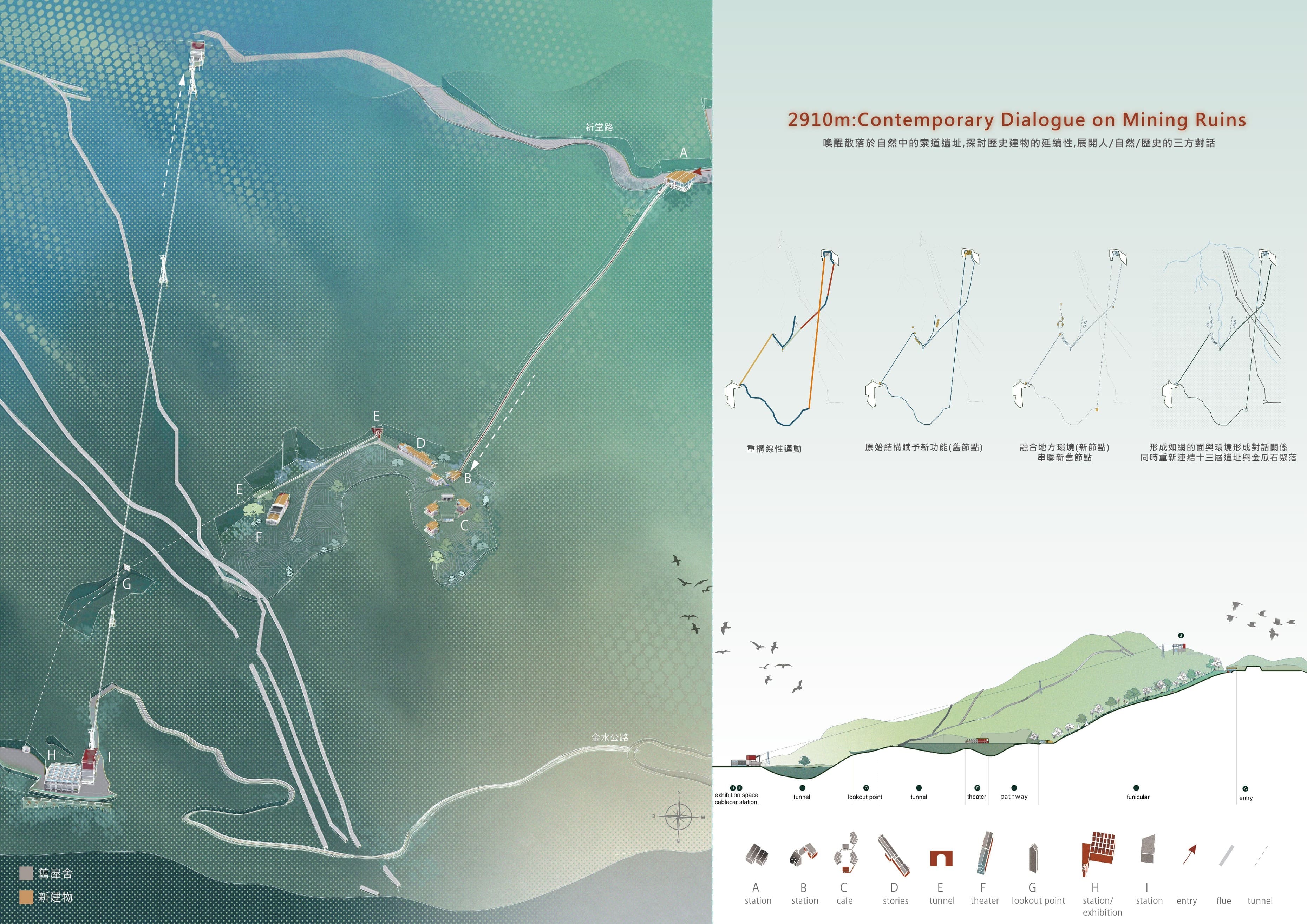
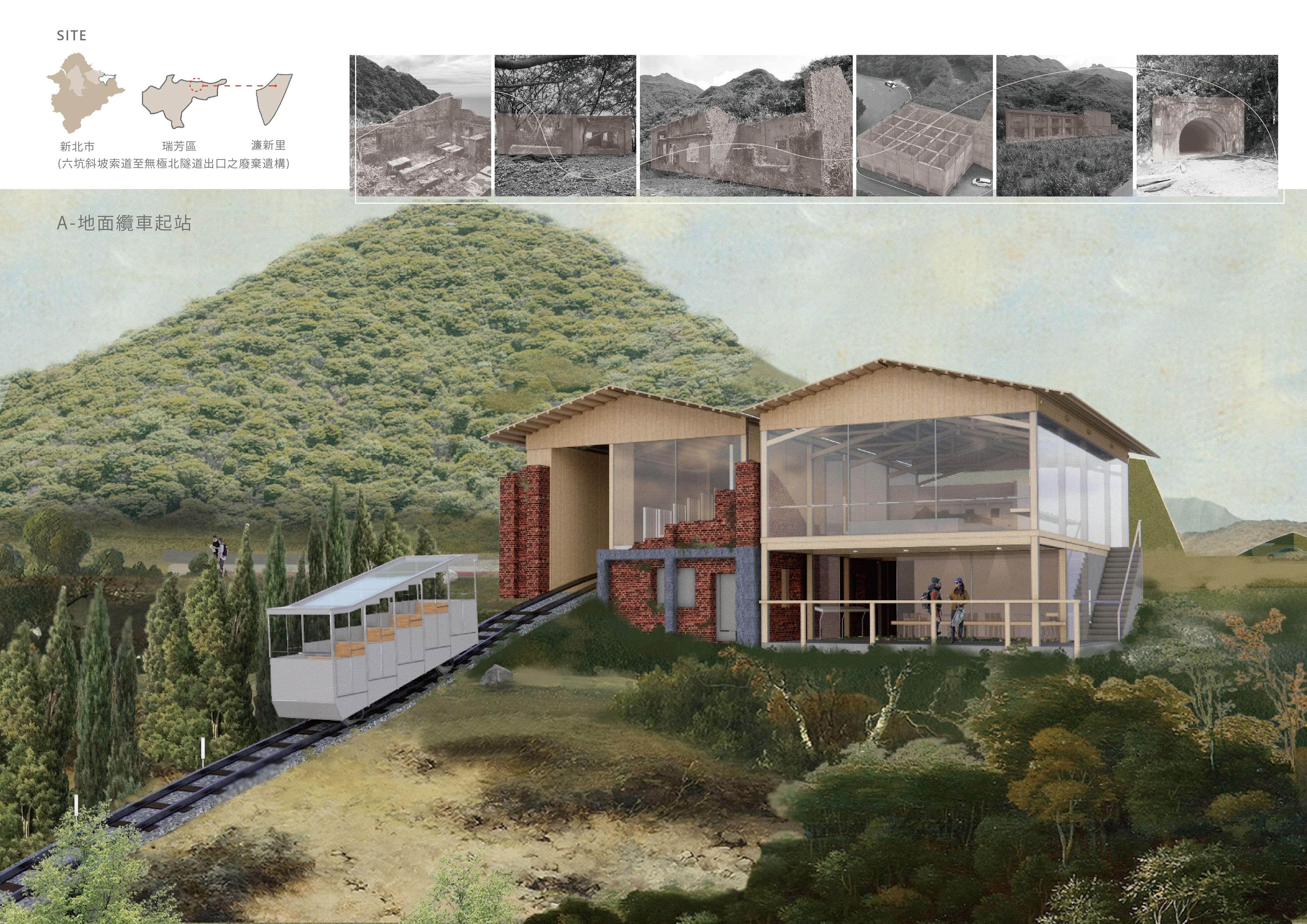
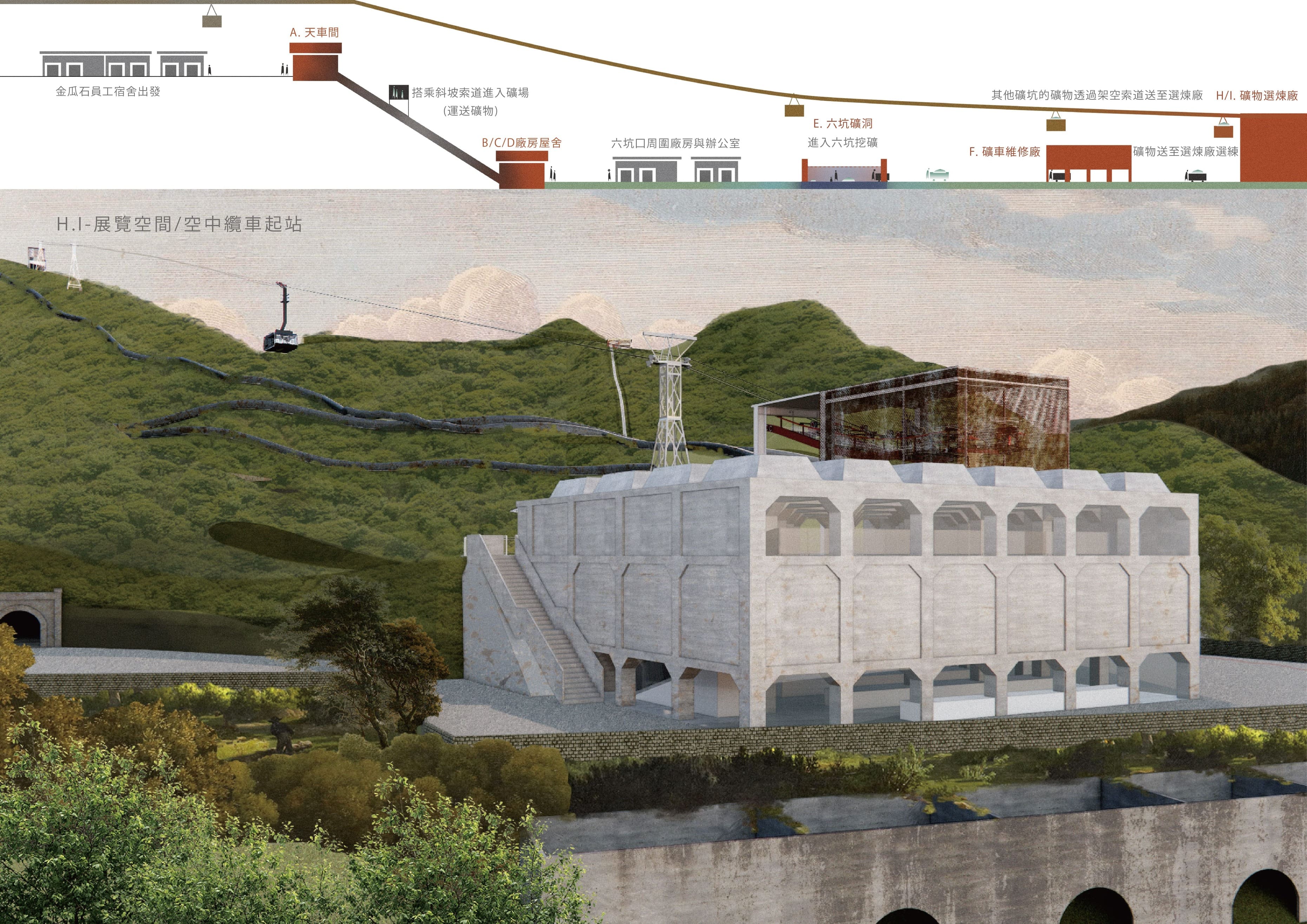
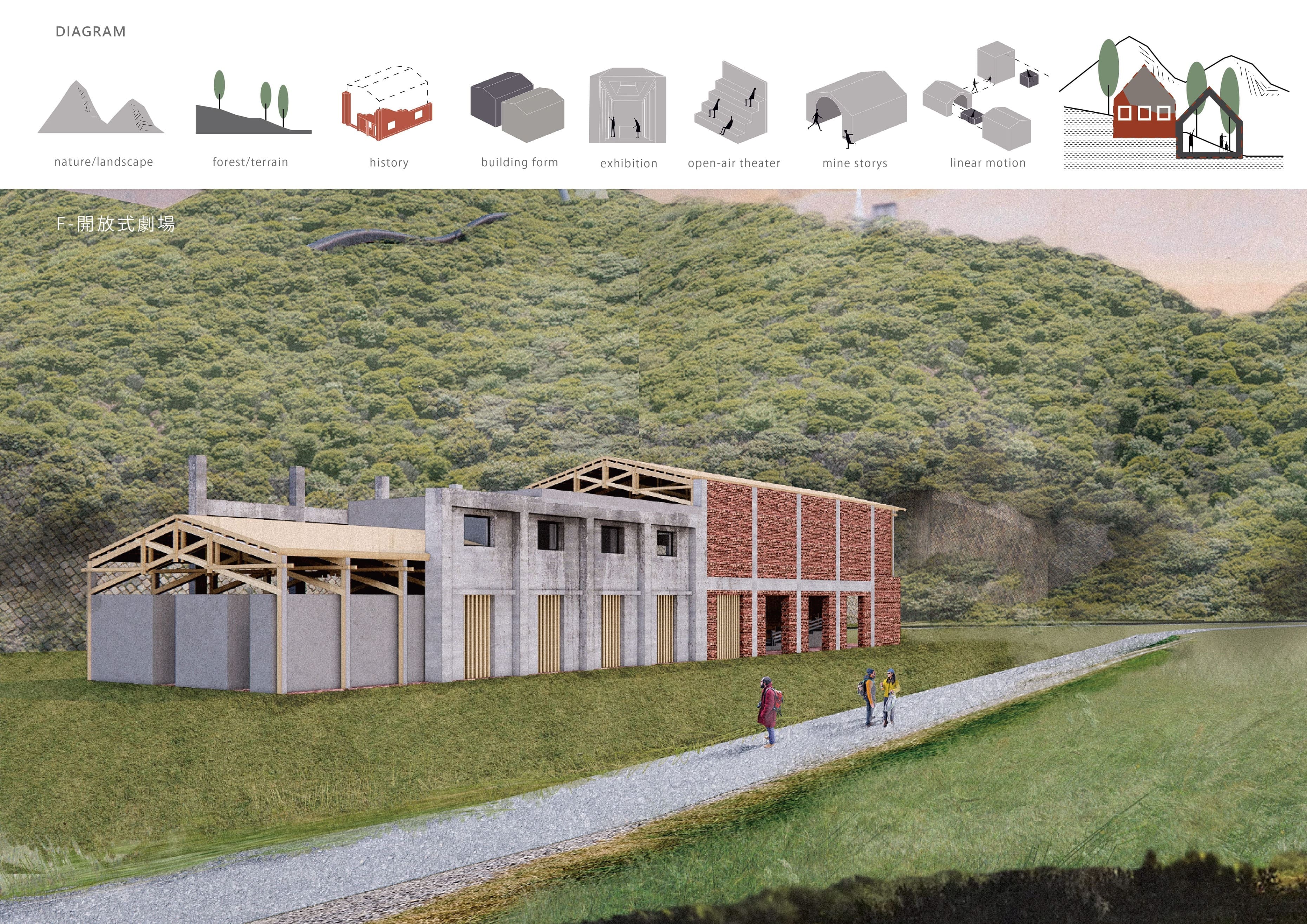
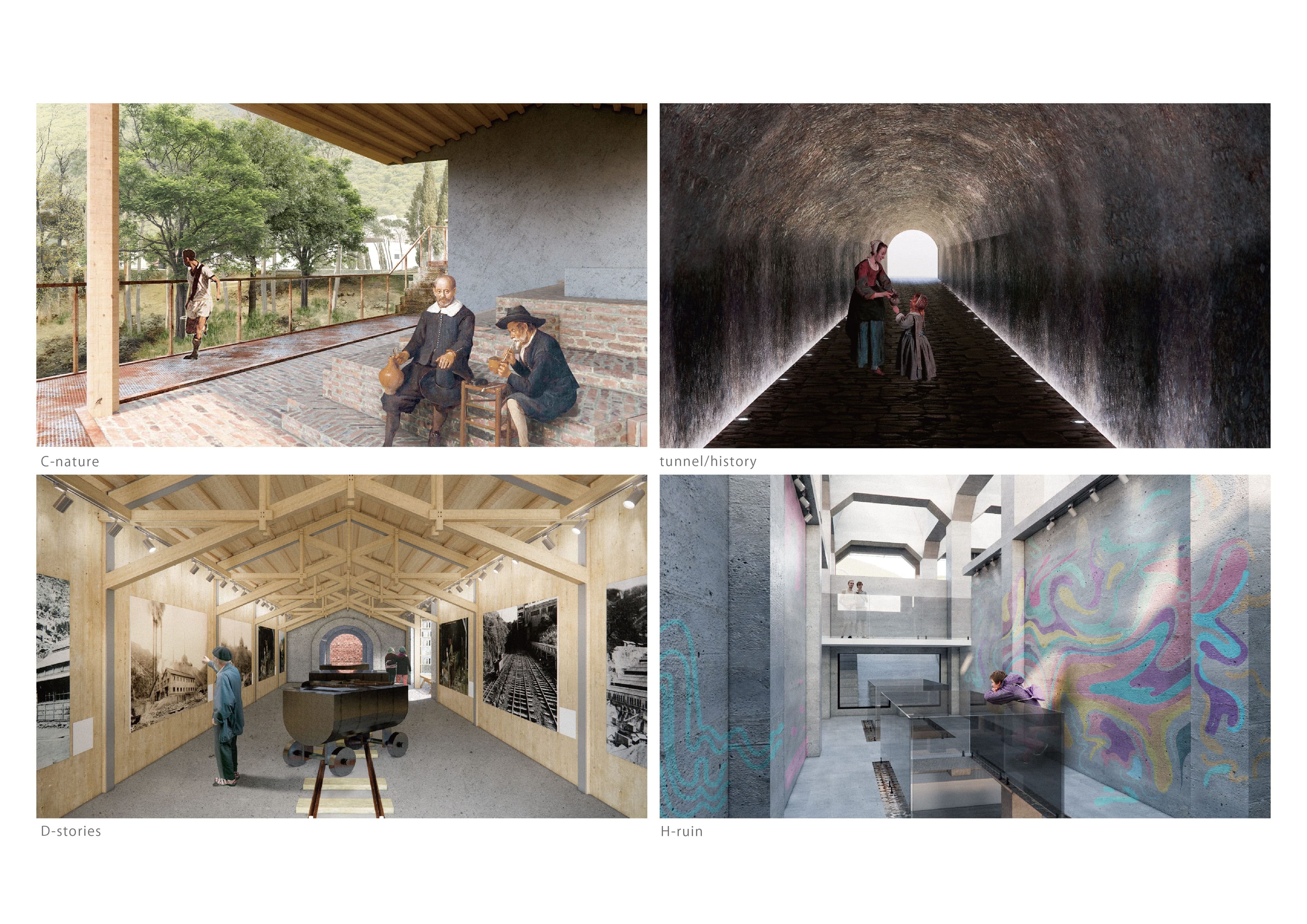
索道系統在礦業停擺後沉寂,成為了當地獨特的記憶符號,並在今日的景觀中留下一片豐富的文化與歷史痕跡。當時的索道系統並未充分考慮到環境問題,它是以人的需求為中心的產物,反映出當時對自然環境的忽視,隨著時間的流逝,這些遺構成為見證歷史變遷的象徵。
然而,這些被遺忘的遺構並非只是單純的過去記憶,它們蘊含著再生的潛力。透過對歷史建築延續性的探討,我們希望重新詮釋這些遺構的價值,結合代纜車系統並與地方環境融合,人們透過線性運動走入自然、連結自然並透過路徑的引導感受遺構的故事、了解歷史,使礦業遺構重新融入當代生活同時將十三層遺址與金瓜石聚落串聯,為當地注入新的生命力。
The cable car system faded into silence after the suspension of mining, becoming a unique symbol of local memory and leaving a rich cultural and historical imprint on the landscape today. The cable car system of that time did not fully consider environmental issues; it was a product centered around human needs, reflecting the era’s disregard for the natural environment. Over time, these structures have become symbols of historical change.
However, these forgotten remnants are not merely memories of the past; they hold the potential for regeneration. Through exploring the continuity of historic architecture, we aim to reinterpret the value of these structures by integrating them with modern cable car systems and the surrounding environment. People can enter nature through linear movement, connecting with nature and experiencing the stories of these structures, guided by pathways that allow them to understand the history. This will allow mining heritage to reintegrate into contemporary life, while also linking 13-Layer Remains(Remains of Copper Refinery) with the Jiufen mining village, injecting new vitality into the area.